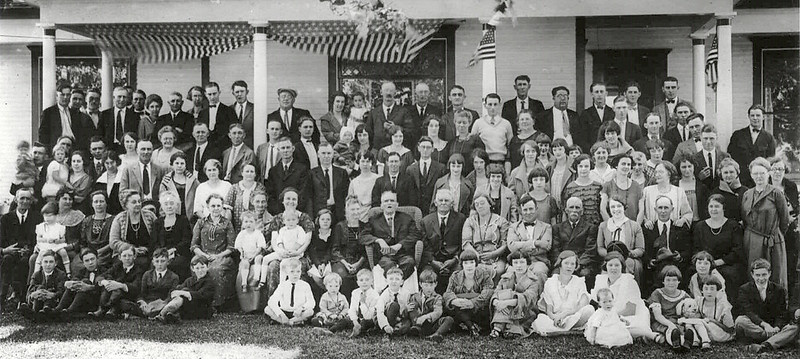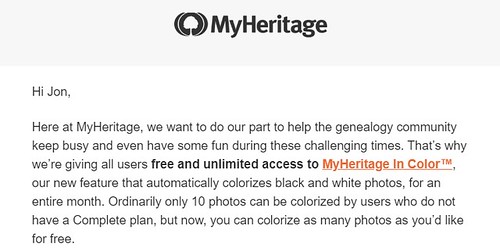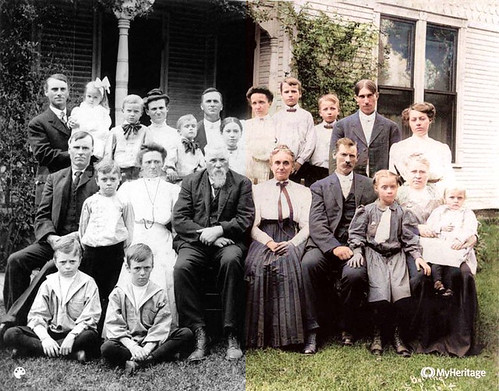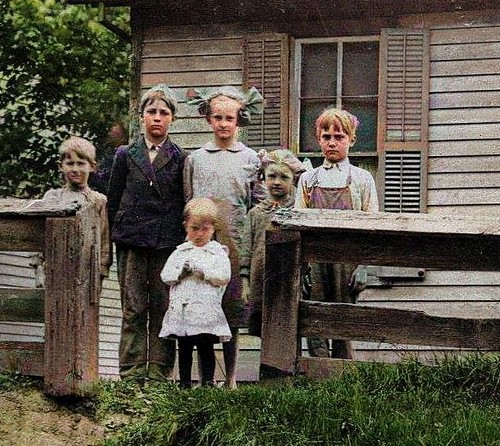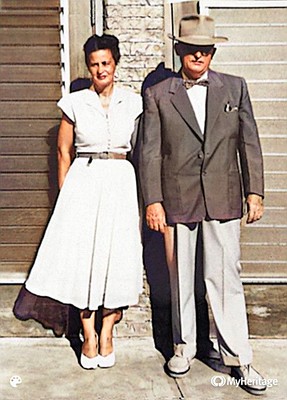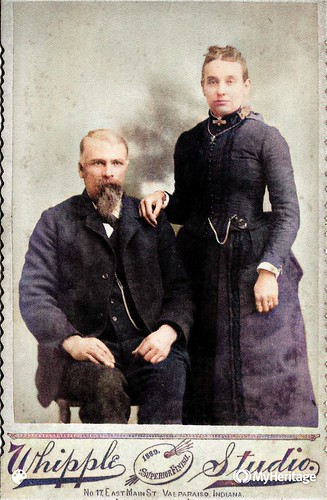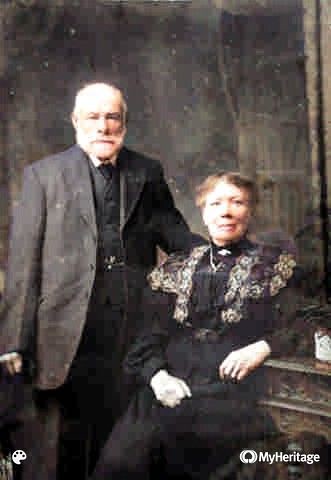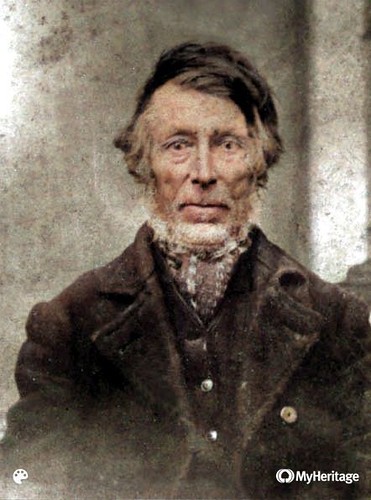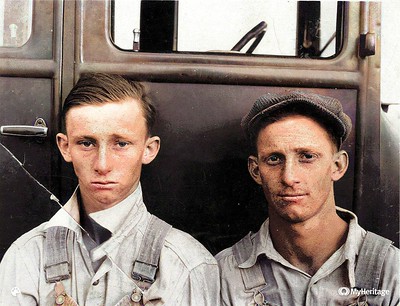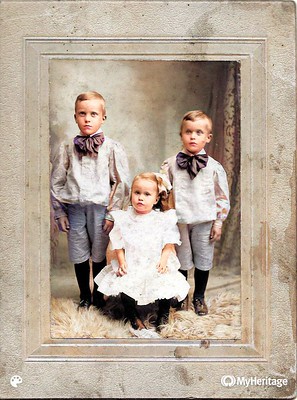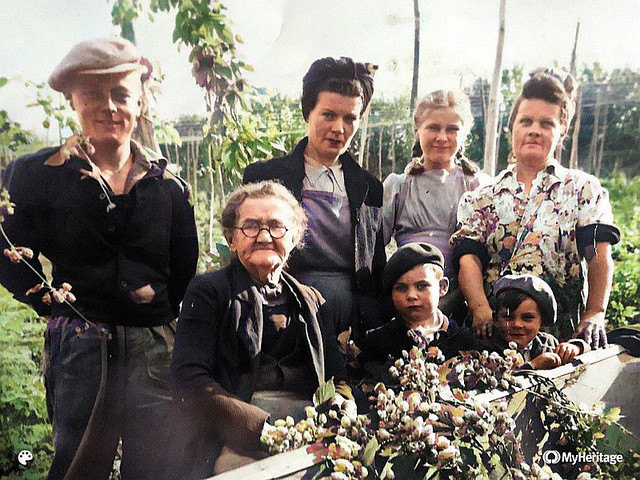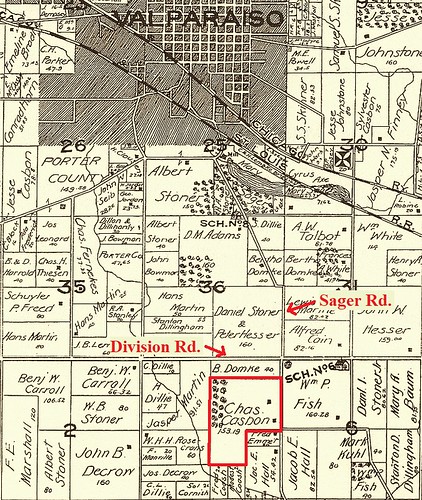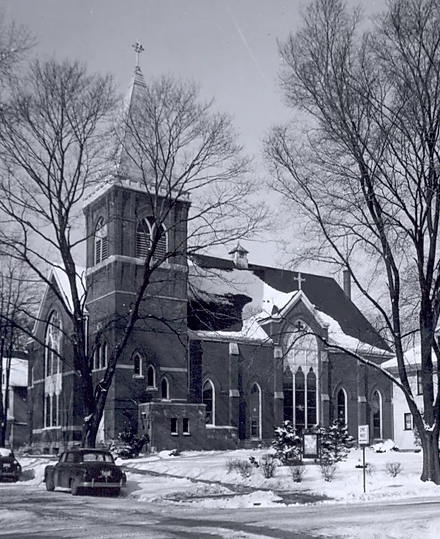I’ve spent a lot of time describing different branches of families with the Casbon surname. For the most part, I’ve tried to work my way forward from the earliest ancestors in a given branch. Today I’m picking up where I’ve left off in my own branch.
Mary Adaline, or just “Adaline,” (Aylesworth) Casbon, my second great grandmother, has been mentioned in other posts, but today she gets the starring role. She was the first wife of Sylvester Casbon (1837–1927), Thomas Casbon’s (~1803–1888) oldest son. Very little information about Adaline’s life has been documented, and sources are limited, so her life story must be filled in from the stories of those around her.
Adaline’s birth date is recorded as May 22, 1842 in the Aylesworth Family genealogy.[1] She was the sixth of seven children born to Giles and Mary (Jones) Aylesworth.[2] Of Giles, we are told that he was “born in Milford, Otswego County, New York, May 28, 1807; moved to Ohio in 1815 with his mother and acquired some education there.”[3] Specifically, Giles and his mother, moved to Wayne County, Ohio, along with two of his brothers, Ira and Phillip.[4] The location is important, because Thomas Casbon arrived in the same county in 1846, and it is here that the Casbon and Aylesworth families first became acquainted.[5]
Giles and Mary Jones were married in 1831.[6] They moved to Porter County, Indiana in late 1842.[7] Adaline would have been only a few months old when they left for Indiana. We are told that:
years of hard labor against great odds appears to have been the chief factor in this decision to move westward. Ohio had been entirely solvent before she contracted for a system of canals which became out-moded before they were finished by the new railroads. “Pet Banks” of Andrew Jackson’s time encouraged speculation and all greenbacks became worthless. Then came the panic of 1837. Giles migrated west with two wagons, household goods, tools, grubbing how, axe and musket, five children and Mary, his wife. With $2,000.00 in gold which had been sealed in a false bottom of a dinner bucket he bought the farm which is the present family home.[8]
Giles settled in Boone Township, in the southern part of Porter County. An early county history says that he “taught school (in Boone Township) in the winters of 1842 and 1843.”[9] This is an interesting detail that I will come back to later. Over the course of years, he, and other family members who followed him from Ohio, acquired large tracts of land in Boone Township. At one point, there was even a village, or at least a railroad stop, known as Aylesworth, about four miles east of Hebron.[10]
Adaline appears in the 1850 and 1860 censuses, living with her parents.[11]


Details from 1850 and 1860 censuses, Boone Township, Porter County, Indiana. (Click on images to enlarge)
We can see that Adaline was enrolled in school in 1850 (but not in 1860). This tells us that she could probably read and write. We can also see that her father’s real estate increased in value from $1,200 to $10,000 between the two censuses. This places him among the wealthiest farmers in the township.
The 1860 census also shows an entry for Deretta Ailsworth, age 4. I wrote a separate post about Deretta in February 2017, explaining why I believe she is Adaline’s illegitimate daughter.[12]
1860 is also the year that Adaline married Sylvester Casbon.[13] To tell that story, we need to backtrack just a little bit. The 1912 History of Porter County tells us that Sylvester, after completing his education, taught school for one term at Mt. Ollie, Ohio.
“Then acting under the persuasion of a friend Mr. Ellsworth, who had settled in Porter county, Indiana, and also from his own wish to locate further west, Mr. Casbon came to this county in 1859 and began teaching in what was then known as the Ellsworth school (my emphasis).”[14]
I should explain that in the above reference, Ellsworth is a variant spelling of Aylesworth. So, we can assume that Sylvester’s friend, “Mr. Ellsworth,” was a member of the Ohio Aylesworth clan. Most likely, he was either Elias (b. 1834) or Sylvenus (b. 1836) Aylesworth, both sons of Giles’ nephew, John (b. 1813).[15] The two brothers grew up in Clinton Township, Wayne County, Ohio, the same township where Sylvester Casbon lived after arriving from England. Sylvester and the Aylesworth boys are recorded within ten pages of each other in the 1850 census.[16] They probably weren’t next-door neighbors, but it’s likely they were school chums—particularly Sylvenus, who was just one year older than Sylvester. Both Elias and Sylvenus moved to Porter County, Indiana sometime before 1860, when they appear in the same household (Elias now married, with two small children) on that year’s census.[17]
Sylvester taught in the Ellsworth school (also known as the Ellsworth District).[18] The name of the school suggests that it was on Aylesworth property. An 1876 map shows two schools located on Aylesworth (not Giles’) land, but there is not enough detail in historical accounts to know whether either of these was the school referred to in Sylvester’s biography. Although an interesting coincidence, it seems unlikely to me that Sylvester taught in the same school house as his father-in-law, Giles, because many of those early schools had burned down or relocated by the time Sylvester arrived.[19]
However, it is very likely that Sylvester taught one or more Aylesworth children. Giles’ son, Irvin, was attending school in 1860, according to the census.[20] Giles’ nephew, Ira, who occupied an adjacent farm, had five children in school in 1860.[21] Also, I think it’s quite possible that Sylvester lived in one of the Aylesworth households during this time. Unfortunately, I haven’t been able to locate Sylvester in the 1860 census.
Whatever the circumstances, Adaline and Sylvester’s paths soon crossed, as described in this rosy account.
In 1860, Mr. Casbon established his own home by his marriage to Miss Mary A. Ellsworth, a daughter of Giles Ellsworth, of Boone township. Their wedded life was begun on a farm of eighty acres in Boone township, which he had purchased. There was a small house, but few other improvements, and on this place their youthful enthusiasm and industry soon were rewarded with substantial prosperity.[22]
Here’s a photo of their marriage registration in the Porter County archives.
 Detail from Porter County marriage records.[23]
Detail from Porter County marriage records.[23]
It’s a minor detail, but ten days passed from the date the license was granted (October 20, 1860) to the day they were married (October 30). It would have been an all-day affair to get the license, with a roughly thirteen-mile buggy or wagon ride to and from the county courthouse in Valparaiso. The officiating minister, “J.N. Buckharmer,” must be James N. Buchanan, who was the pastor of the United Presbyterian Church at Hebron, about four miles west of the Aylesworth farm.[24]
Adaline and Sylvester’s first child, a daughter named Bertha, died June 22, 1861, aged six months and six days.[25] This works out to an approximate birth date of December 16, 1860, only six weeks after the couple was married. Even if Bertha wasn’t born at term, Adaline’s pregnancy must have been quite advanced at the time of the wedding.
Adaline and Sylvester had two more children: Cora Ann, born in 1861, and Lawrence Leslie (my great grandfather), born in 1865.[26] Then, tragically, on March 5, 1868, Adaline died, a month shy of her twenty-sixth birthday. We don’t know how or why she died. Early death was all too common then, especially for women of child-bearing age. All we have today is a broken and worn grave marker.

Adaline’s grave marker, Cornell Cemetery, Porter County, Indiana.[27]
There are so many questions left unanswered. Was she happy in her life and marriage?
Her surviving children (except maybe Deretta—“Deete”) would only have had the dimmest memories, if any, of her. And yet, she leaves a legacy through her descendants. I know of 50 living descendants just through her son Lawrence. The number must be considerably greater when you consider her daughters, Deretta and Cora.
I would not be here without her—and for that I’m grateful!
[1] Aylesworth Family, 2d ed. (Porter County, Indiana: Privately printed, 1984), p. 13.
[2] Aylesworth Family, pp. 8-9.
[3] Ibid.
[4] Ibid, p. 7.
[5] Jon Casbon, “From England to Indiana, Part 3,” 21 Oct 2016, Our Casbon Journey (https://casbonjourney.wordpress.com/2016/10/21/from-england-to-indiana-part-3/ : accessed 31 March 2018).
[6] Ibid. p. 8.
[7] Mrs. John C. Aylesworth, “Aylesworth, Biography: Porter County biographical sketches …,” Porter County, Indiana (http://www.inportercounty.org/Data/Biographies/Aylesworth45.html : accessed 31 March 2018).
[8] Aylesworth Family, p. 9.
[9] Weston A. Goodspeed, Charles Blanchard, Counties of Porter and Lake Indiana: Historical and Biographical; Illustrated (Chicago: F.A. Battey & Co., 1882), p. 314; online image, Internet Archive (https://archive.org/stream/countiesofporter00good#page/314/mode/2up/search/aylsworth : accessed 31 March 2018).
[10] History of Porter County, Indiana: A Narrative Account of its Historical Progress, its People and its Principal Interests, vol. 1 (Chicago: Lewis Publishing Co., 1912), p. 136; online image, Hathi Trust Digital Library (https://babel.hathitrust.org/cgi/pt?id=wu.89067919183;view=1up;seq=170 : accessed 31 March 2018).
[11] 1850 U.S. Census, Porter County, Indiana, population schedule, Boone Township, p. 142 (stamped), dwelling 573, family 573, Giles Aylesworth; imaged as “ United States Census, 1850,” database with images, FamilySearch (https://www.familysearch.org/ark:/61903/3:1:S3HY-D1K9-NW6?cc=1401638 : accessed 31 March 2018) >Indiana >Porter >Boone, image 11 of 14; citing NARA microfilm publication M432, Roll 165. 1860 U.S. Census, Porter County, Indiana, population schedule, Boone Township, p. 150 (written), dwelling 1129, family 1096, Giles Ailsworth; imaged as “United States Census, 1860,” FamilySearch (https://www.familysearch.org/ark:/61903/3:1:33SQ-GB9J-SZPK?i=3&cc=1473181 : accessed 31 March 2018) >Indiana >Porter >Boone Township, image 4 of 24; citing NARA microfilm publication M653, Roll 289.
[12] Jon Casbon, “Deete Casbon—a mystery,” 27 Feb 17, Our Casbon Journey (https://casbonjourney.wordpress.com/2017/02/27/deette-casbon-a-mystery/ : accessed 31 March 2018).
[13] Indiana, Porter County, “Marriage Record Book 2, Dec 1850–June 1863,” p. 458, 2d entry, Sylvester Casbon & Adeline Ellsworth, 30 Oct 1860; Valparaiso Public Library, Larry J. Clark Genealogy Center.
[14] History of Porter County, Indiana, vol 2, p. 483.
[15] Aylesworth Family, pp. 10, 15.
[16] 1850 U.S. census, Wayne County, Ohio, population schedule, Clinton Township, folio. 1 (verso), dwelling 8, family 8, Sylvester in household of Thomas Casbon; imaged as “United States Census, 1850,” FamilySearch (https://www.familysearch.org/ark:/61903/3:1:S3HY-XHRS-K7M?i=1&cc=1401638 : accessed 31 March 2018) >Ohio >Wayne >Clinton image 2 of 28; citing NARA microfiom publication M432, Roll 739. 1850 U.S. census, Wayne County, Clinton Township, folio 6 (recto & verso), dwelling 88, family 88, Elias & Sylvenus in household of John Aylesworth; FamilySearch (https://www.familysearch.org/ark:/61903/3:1:S3HY-XHRS-VDS?i=11&cc=1401638 : accessed 31 March 2018) >Ohio >Wayne >Clinton image 12 of 28.; ibid.
[17] 1860 U.S. census, Porter County, Indiana, population schedule, Boone Township, p. 149 (written), dwelling 1118, family 1086, Elias Ailsworth; imaged as “United States Census, 1860,” FamilySearch (https://www.familysearch.org/ark:/61903/3:1:33SQ-GB9J-SZ6V?i=2&cc=1473181 : accessed 31 March 2018) >Indiana >Porter >Boone Township, image 3 of 24; previously cited.
[18] Goodspeed & Blanchard, Counties of Porter and Lake Indiana, p. 707.
[19] Ibid, pp. 169-70.
[20] 1860 U.S. census, entry for Giles Ailsworth; previously cited.
[21] 1860 U.S. census, Porter County, Indiana, Boone Township, entry for Ira Ailsworth; FamilySearch (https://www.familysearch.org/ark:/61903/3:1:33S7-9B9J-SH1R?cc=1473181 : accessed 31 March 2018), image 2 of 24; previously cited.
[22] History of Porter County, Indiana, vol 2, p. 483.
[23] Indiana, Porter County, “Marriage Record Book 2, Dec 1850–June 1863,” p. 458; previously cited.
[24] “James N. Buchanan, Biography: Porter County Biographical Sketches,” Porter County, Indiana (http://www.inportercounty.org/Data/Biographies/Buchanan198.html : accessed 31 March 2018).
[25] Northwest Indiana Genealogical Society, Boone Township Cemeteries, Porter County Indiana, leaflet (Valparaiso, Indiana, 1997), p. 6. (photocopy obtained in email from Steve Shook [e-address for private use], 2 Mar 2018).
[26] “South County Woman Dies,” The (Valparaiso, Indiana) Vidette-Messenger, 16 Mar 1940, p. 1, col. 5; online image, Newspaper Archive (accessed through participating libraries: 11 July 2016). “85-Year-Old Resident of County Dies,” The Vidette-Messenger, 16 Jun 1950, p. 1, col. 5; Newspaper Archive (29 October 2015).
[27] “Mary Adaline Casbon,” Find A Grave (https://www.findagrave.com/memorial/183537552/mary-adaline-casbon : accessed 31 March 2018), d. 5 Mar 1868, memorial # 183537552, created by “Jim”; citing Cornell Cemetery, Hebron, Indiana.
 Descendancy chart of the Aylesworth family, beginning with the original immigrant, Arthur1 Aylworth and ending with Carrie Belle9 and Mary Adaline7 Aylesworth in their respective branches; superscript numbers after names represent each generation, beginning with Arthur1 (Click on image to enlarge)
Descendancy chart of the Aylesworth family, beginning with the original immigrant, Arthur1 Aylworth and ending with Carrie Belle9 and Mary Adaline7 Aylesworth in their respective branches; superscript numbers after names represent each generation, beginning with Arthur1 (Click on image to enlarge)